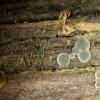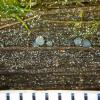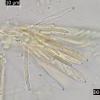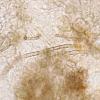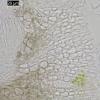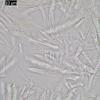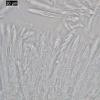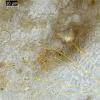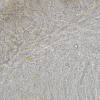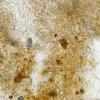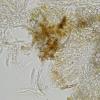
15-12-2025 07:09
 Danny Newman
Danny Newman
indet. Rutstroemiaceae sp. on unk. fallen leavesMc

15-12-2025 21:11
 Hardware Tony
Hardware Tony
Small clavate hairs, negative croziers and IKI bb

15-12-2025 15:54
 Johan Boonefaes
Johan Boonefaes
Unknown anamorph found on the ground in coastal sa

15-12-2025 15:48
 Danny Newman
Danny Newman
Melanospora cf. lagenaria on old, rotting, fallen

15-12-2025 07:05
 Danny Newman
Danny Newman
Pseudosclerococcum golindoi (det: Zotto)near Cosb

15-12-2025 11:49
 Danny Newman
Danny Newman
ITS sequences from the following two collections B

15-12-2025 12:34
 Danny Newman
Danny Newman
indet. Rhytismataceae on oak leafnear Purchase Roa

09-12-2025 12:06
 Andgelo Mombert
Andgelo Mombert
Bonjour,Je recherche l'article concernant Hypobryo
I found the following small Mollisia on 25.08.2024 on 'last year's' Typha at the edge of a pond.
The growth point was at the base of the stem lying in the water.
Steinbach, MTB 6507,23, approx. 400m altitude.
Diameter of the apothecia approx. 0.6 to 0.8mm,
Apices pulvinate when young, later flattened. Grey-blue to grey-brown, sometimes with lighter centre.
Asci approx. 64 x 7 ym, hooks +,difficult to recognise.
Porus reaction +bb
Paraphylls with refractive vacuoles KOH-
Marginal cells variously shaped, expiculum cells spherical
Spores OCI 2- 3, club-shaped
Spores [95% - 23 - QPr - v - H2O(nat) ] = 9.2 - 11 - 12.7 x 1.9 - 2.6 - 3.3 µm;
lav x bav = 11 ±0.36 x 2.6 ±0.13 µm, Qav = 4.2 ±0.18
According to the key from Ingo Wagner I ended up with 'Mollisia poaeoides Rehm 1891'.
What is your opinion?
Many thanks in advance
Best regards
Dirk

I would have taken a wrong turn here with the key
1120 not on Phragmitis (reed) --> 1130
1120* on Phragmitis (reed) --> Mollisia hydrophila
Spores 9-12(15?) x 2-2.6, KOH- or KOH+
But I have crushed a whole apo here and if that passes as crystals? OK
I looked in your folder and can't really imagine what crystals are there, sorry.
Best regards
Dirk


thank you very much for your support and opinion.
Then I will file the find under Mollisia_cf. hydrophylla KOH-, few to no crystals.
Herzliche Grüße
Dirk

With clavate spores with OCI = 2 and KOH-negative reaction compare also with "Mollisia tomentosa":
https://drive.google.com/drive/u/0/folders/11dtcLhIyx8rbRjAJv_gdhMM-vz3YT5fn?tid=0B5SeyOEkxxZhYVZub0N1aGY5YTg
Greetings
Ingo

Hi Ingo,
Thank you very much for your information.
The picture 'Mollisia hydrophila 19.IX.2017-2 in the folder fits almost exactly to the micro features I have noticed.
In Ekanayaka's description, however, the asci are described as being significantly longer than mine were.
Here are three examples of my measurements: 64x6.5; 60 x 5.7, 65 x6.5 ym
I also saw the pulvinate very well, which I had not noticed in 'my' previous Mollisia finds.
Could well have something to do with the location under water, as it was no longer visible later (one or two) days later.
Thank you and best regards
Dirk

Dirk:
"In Ekanayaka's description, however, the asci are described as being significantly longer than mine were.
Here are three examples of my measurements: 64x6.5; 60 x 5.7, 65 x6.5 ym"
It is important in which state you measure the asci, keyword turgor.
https://asco-sonneberg.de/pages/gallery/ascus-turgor40991.php?group_id=29201&position=2
Greetings
Ingo
